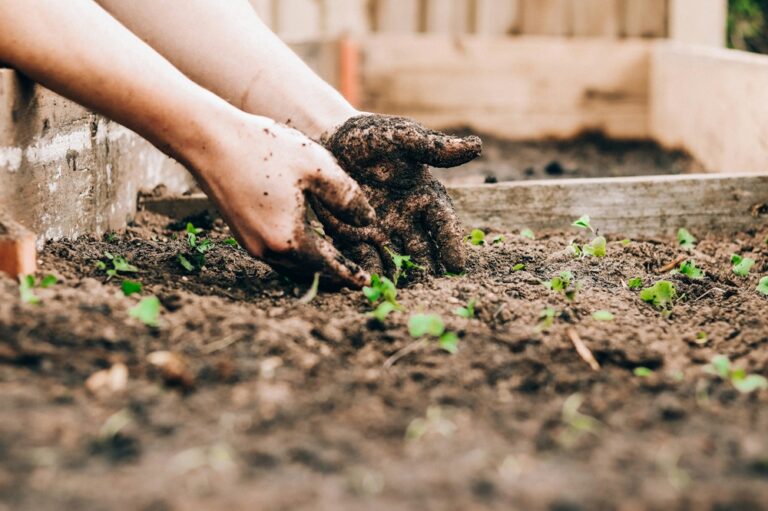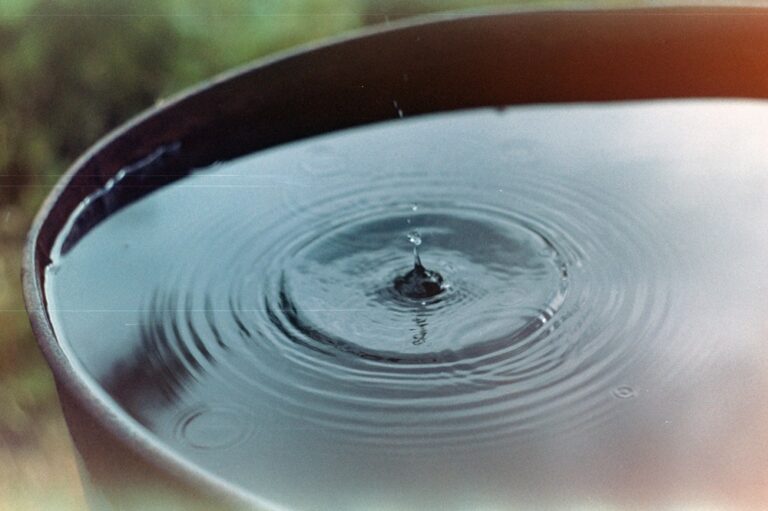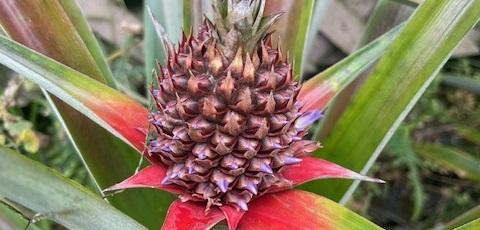Gardening is often perceived as complex and very time-consuming, requiring meticulous attention to detail to see any success. While there’s no denying the wealth of knowledge that comes with experience, at its core, gardening is fundamentally about three essential elements: soil, water, and sunlight. Get these three factors right, and you’re well on your way to a thriving garden. Sounds easy right? The tough thing is that every place has different soil, water & sunlight; and every plant has different requirements for soil, water, and sunlight. I guess that means it can get pretty complex, but learn about your area and a few plants you want to begin with, and it becomes a whole lot simpler and more beginner-friendly.

Soil: The Foundation of Growth
Imagine soil as the foundation of your garden, essentially like a sturdy base that supports an entire house for hundreds of years. Soil provides plants with essential nutrients, anchors their roots, and regulates moisture levels. However, every soil is different, and understanding your soil’s composition is crucial.
Soil testing is a great place to begin. It’s generally inexpensive or even free and will give vital information about your soil’s pH levels, nutrient content, and texture. Soil testing is usually available through local Ag Extention offices or universities. With this knowledge, you can make informed decisions about soil amendments and fertilizers tailored to your plants’ specific needs. This is definitely a do as I say not as I do moment. I think I’ve only done soil tests once or twice. If you have a good basic understanding of soil structure and symptoms of nutrient deficiencies, you can probably get away without soil testing. If you’re a true beginner and don’t yet have a feel for soil structure and don’t know much about signs of nutrient deficiencies, then soil testing will make gardening much easier and more fun.
Different plants thrive in different soil types. For instance, acidic-loving plants like azaleas and blueberries prefer soils with lower pH levels, while vegetables such as tomatoes and peppers thrive in slightly acidic to neutral soils. Understanding your plants’ soil preferences is key to their health and productivity.
Soil Nutrients: Fueling Plant Health
Beyond providing physical support, soil serves as a reservoir of vital nutrients that plants require for growth and development. These nutrients include macronutrients like nitrogen (N), phosphorus (P), and potassium (K), as well as micronutrients like iron, zinc, and manganese. Each nutrient plays a specific role in plant physiology, from promoting leafy growth to enhancing flowering and fruiting. Many plants, especially vegetables and fruits, will need more nutrients than are available in the soil. This is where fertilizers come in. The options for different fertilizers can be overwhelming. But the basics come down to Nitrogen, Phosphorus, and Potassium, (N–P-K). Most plants will do well with a balanced fertilizer with equal N-P-K numbers, but to help flower and fruit growth, you often want a higher Phosphorus number. Organic fertilizers are safe and generally won’t hurt plants if you overdo it. They often improve soil structure and include beneficial microbes and micronutrients. Synthetic fertilizers (also called chemical or inorganic fertilizers) can be harmful to kids and pets and can burn plants if over-applied. But synthetic fertilizers work faster, so there may be cases when synthetic fertilizers are preferable.
Based on soil testing results, you can tailor fertilizer applications to supplement your plants’ specific needs. Organic amendments like compost, aged manure, and compost tea also enrich soil fertility, improve soil structure, and foster beneficial microbial activity.
Soil Variability: Nature's Mosaic
One of the fascinating aspects of gardening is the diversity of soils, even within a single yard or garden. Factors such as topography, parent material, climate, and human activities contribute to soil variability. You might find sandy soils that drain quickly, clay soils that retain moisture, or loamy soils that strike a balance between drainage and water retention.
Understanding your soil’s unique characteristics empowers you to make informed decisions about plant selection, irrigation practices, and soil amendments. For example, drought-tolerant plants thrive in sandy and rocky soils with good drainage, while moisture-loving plants flourish in loamy soils with adequate water-holding capacity. Clay is generally the toughest to work with, as it is dense and doesn’t allow airflow, water drainage, or even root growth. But clay soil isn’t a death sentence for your garden. Adding compost, and other organic matter to clay soil will help break up clay soils. The good news is that clay soils often retain nutrients well.
In both Illinois and Texas, my gardens were heavy clay soil. In Illinois, we mostly built raised beds and brought in soil. In Texas, I added compost and leaves to the soil to help break up the clay. Here in Hawaii, my “soil” is very rocky. Many drought-tolerant plants do well in the rocky soil. I grow many vegetables in large pots with compost and store-bought soil. For other plants, especially fruit trees, I do my best to dig a large hole, add as much compost as possible, and then add the plant.

Water: Lifeblood of the Garden
Water is also a critical factor in gardening success, but finding the right balance can be tricky. Overwatering is a common issue, especially for newer gardeners who want to “over love” their plants. Overwatering can lead to root rot, fungal diseases, and nutrient leaching. Signs of overwatering include yellowing leaves, wilting despite moist soil, and a nasty odor emanating from the soil- this is the smell of oxygen not being able to get into the soil because it’s waterlogged- it’s common in bogs and swamps- not what most garden plants want!
On the other hand, underwatering can cause plants to wilt, have dry and crispy leaves, and show signs of stress like leaf drop. Some plants, like succulents and cacti, are more tolerant of drought conditions and prefer drier soil between watering sessions. Most vegetables and fruits like regular, deep watering with moderate drying between waterings.
It’s crucial to observe your plants closely and adjust your watering routine accordingly to give them just the right amount of water. Factors like plant species, growth stage, and environmental conditions all play a role in determining water needs. Using watering techniques such as drip irrigation or bottom watering can help deliver water directly to the roots and promote healthier growth.
Remember, it’s better to underwater slightly than to overwater, as most plants can recover from mild dehydration easier than from waterlogged conditions. Experimenting with different watering schedules and observing how your plants respond will help you find the perfect balance for optimal plant health and growth.
Make sure to have good soil drainage, especially if you’re in an area where rain is abundant. One of the biggest issues with clay soil is that it doesn’t drain well and becomes waterlogged easily.

Sunlight: Nature's Energy Source
Sunlight is to plants what food is to humans—an indispensable source of energy. Through photosynthesis, plants convert sunlight into sugars, fueling their growth and development. Understanding your garden’s sunlight exposure is essential for selecting suitable plants, their positions, and optimizing their growth potential.
Different plants have varying sunlight requirements. Some thrive in full sun (at least six hours of direct sunlight daily). Examples include sun-loving plants like tomatoes and peppers, herbs like basil and rosemary, as well as many flowering annuals. On the other hand, shade-tolerant plants, such as hostas and ferns, prefer dappled or filtered sunlight.
When planning your garden, take note of sun patterns throughout the day and year. Observe areas of full sun, partial shade, and full shade, and match plants accordingly. Consider using shade structures or planting taller crops strategically to create microclimates that suit different plant preferences.
Adapting to Nature's Variability
One of the joys—and challenges—of gardening is the ever-changing nature of the environment. Rain amounts fluctuate constantly, sun can be unpredictable and shifts throughout the year. And of course, although they are the Big Three, soil, water, and sunlight aren’t the only factors that will determine your gardening success. Weather fluctuations, seasonal shifts, pests and diseases can all impact your garden’s health and productivity. Learning to adapt and troubleshoot is an essential skill for every gardener.
Regular observation is a big key to successful gardening. Walk through your garden as often as possible. Keep an eye out for signs of stress, disease, or pest infestations in your plants. Early detection allows for quick treatment, which makes success a lot more likely.
Embracing the Journey
In conclusion, gardening is an adventure of discovery and growth. While soil, water, and sunlight form the foundational pillars, each garden is a unique tapestry woven with care, passion, and a deep appreciation for nature’s wonders. By tuning into the needs of your plants, observing with curiosity, and adapting to nature’s rhythms, you’ll cultivate not just a garden, but a flourishing ecosystem teeming with life and vitality.



